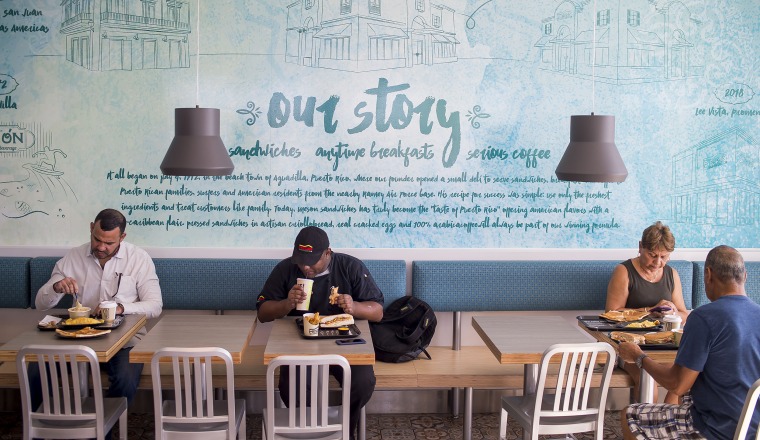For a country with an obesity problem, there's some ironic new data: People in the U.S. are eating less often, according to new data from market research company NPD Group. And, to the consternation of restaurants, they're more likely to have their meals and snacks at home and not out.
"Today, the average American consumer has 1,473 eating occasions on a per capita basis annually," said NDP food and beverage national analyst David Portalatin. "That's down 3.8 percent versus 1,532 in 2008," although that doesn't necessarily mean fewer calories overall. Including all meals and snacks, the average person still eats four times a day.
That's a grand total of 451 billion consumption occasions a year. And better add a few more place settings, because population growth will increase the number by about 1 percent a year.
The reason for the slowdown is an aging population, Portalatin says. The baby boomers have entered a time of life when people typically reduce their eating, bringing down the national average. "From our teens through our mid-to-late 50s, there's a life stage-oriented pattern of gradually increasing consumption behavior."
Millennials are a large block of the population in the period of life where they increase eating, but they still don't make up for the baby boomers who are on the down side.
"By the time we reach our 60s or 70s, our calorie needs, our energy needs, are less than as young adults," explained Lauri Wright, a registered dietitian nutritionist and spokesperson for the Academy of Nutrition and Dietetics. People frequently also become less active as they age, further reducing need.
Then there are "psychosocial factors" that affect appetite and are more common among older people. Depression, loss of a significant other, and loneliness all can contribute to reduced eating. "Then, too, as we age into the 70s, you will see marked decline in your senses — your ability to smell, to taste," Wright said. "That decreases your pleasure." And interest.
The economics of food insecurity come into play as well. "The most recent reports on senior food security shows that the seniors between 60 and 65 have higher food insecurity," said Allison Karpyn, an associate professor of human development and family sciences at the University of Delaware. She said the latest statistics show 8.6 million seniors are food insecure. Those who are poor, of Hispanic or African-American background, or divorced are more likely to face the situation.
The NPD data also shows that people are eating at home 80 percent of the time, which is more frequently than the 75 percent of a decade ago. Cost is one issue. Restaurant meal prices are increasing at 2.2 percent a year, faster than the rise in costs of a meal at home.
Then there is everything that goes with eating out. "If you go to a restaurant, you've got to get showered and dressed, you've got to get the kids in the car," said Richard George, a professor of food marketing at St. Joseph's University in Philadelphia. "Then you have a gratuity on top. People say, I just want to stay home." That's why fast casual dining like Chipotle or Smashburger are growing five times as fast as the restaurant industry in general.
The shift to eating at home is cross-generational. "We've had a 21 percent increase of people over 65 who don't eat out at the same rate," Portalatin said. But the trend also exists among millennials, who are normally considered heavy restaurant users. The average millennial dines out about 241 times a year. "A decade ago, that number would have been 257 times."
Though what counts as home cooking has also changed. Dinner can be a precooked rotisserie chicken," said George. "They buy potato salad and make a salad."
Expect grocery stores and restaurants alike to keep working hard to provide part of that dinner and "increase their share of stomach" — even if them growing their bottom line involves you growing your middle.
